Lesson 7
Graphs of Proportional Relationships
Let's see how graphs of proportional relationships differ from graphs of other relationships.
7.1: Notice These Points
- Plot the points \((0,10), (1,8), (2,6), (3,4), (4,2)\).
- What do you notice about the graph?
7.2: T-shirts for Sale
Some T-shirts cost $8 each.
| \(x\) | \(y\) |
|---|---|
| 1 | 8 |
| 2 | 16 |
| 3 | 24 |
| 4 | 32 |
| 5 | 40 |
| 6 | 48 |
-
Use the table to answer these questions.
- What does \(x\) represent?
- What does \(y\) represent?
- Is there a proportional relationship between \(x\) and \(y\)?
-
Plot the pairs in the table on the coordinate plane.
-
What do you notice about the graph?
7.3: Tyler's Walk
Tyler was at the amusement park. He walked at a steady pace from the ticket booth to the bumper cars.
-
The point on the graph shows his arrival at the bumper cars. What do the coordinates of the point tell us about the situation?
- The table representing Tyler's walk shows other values of time and distance. Complete the table. Next, plot the pairs of values on the grid.
- What does the point \((0, 0)\) mean in this situation?
- How far away from the ticket booth was Tyler after 1 second? Label the point on the graph that shows this information with its coordinates.
- What is the constant of proportionality for the relationship between time and distance? What does it tell you about Tyler's walk? Where do you see it in the graph?
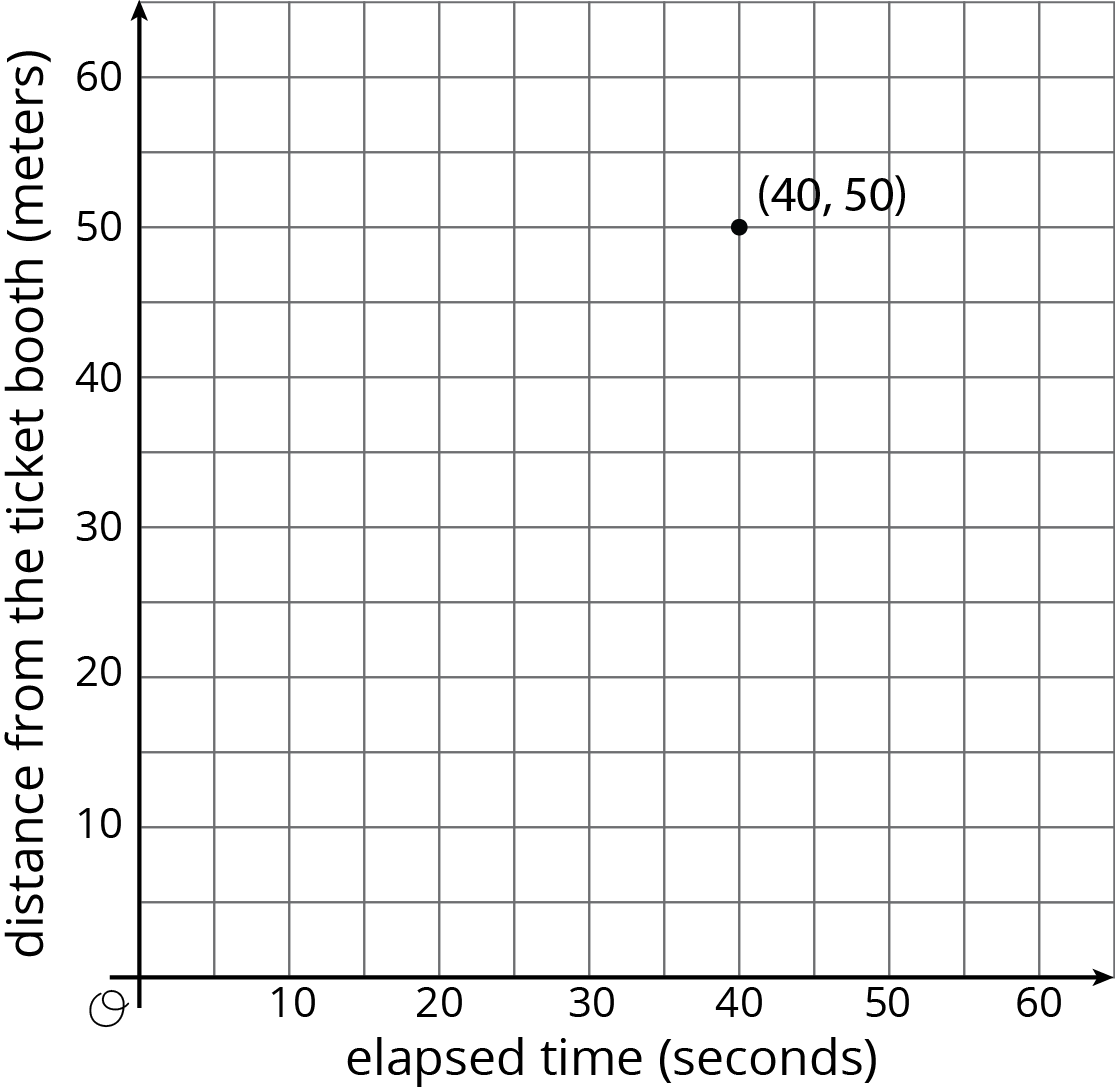
| time (seconds) |
distance (meters) |
|---|---|
| 0 | 0 |
| 20 | 25 |
| 30 | 37.5 |
| 40 | 50 |
| 1 |
If Tyler wanted to get to the bumper cars in half the time, how would the graph representing his walk change? How would the table change? What about the constant of proportionality?
Summary
One way to represent a proportional relationship is with a graph. Here is a graph that represents different amounts that fit the situation, “Blueberries cost \$6 per pound.”
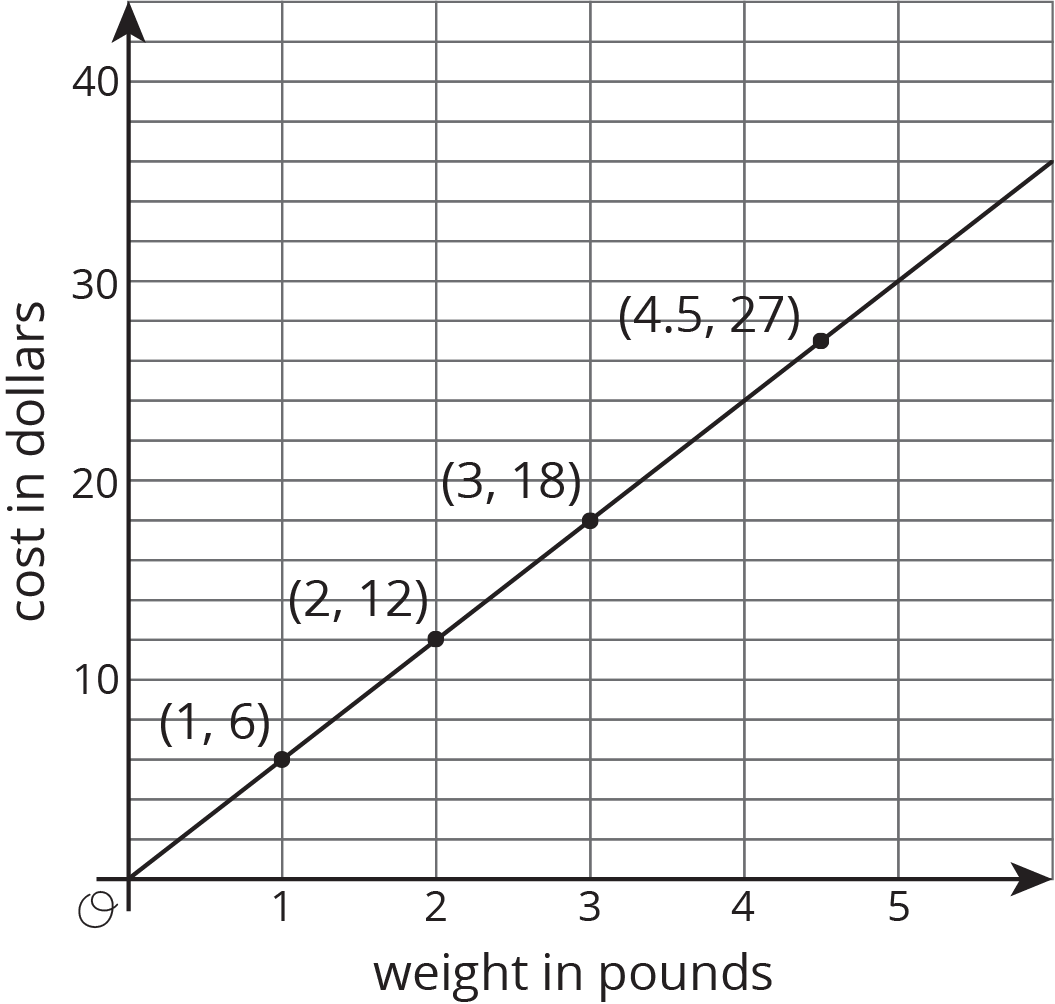
Different points on the graph tell us, for example, that 2 pounds of blueberries cost \$12, and 4.5 pounds of blueberries cost \$27.
Sometimes it makes sense to connect the points with a line, and sometimes it doesn’t. We could buy, for example, 4.5 pounds of blueberries or 1.875 pounds of blueberries, so all the points in between the whole numbers make sense in the situation, so any point on the line is meaningful.
If the graph represented the cost for different numbers of sandwiches (instead of pounds of blueberries), it might not make sense to connect the points with a line, because it is often not possible to buy 4.5 sandwiches or 1.875 sandwiches. Even if only points make sense in the situation, though, sometimes we connect them with a line anyway to make the relationship easier to see.
Graphs that represent proportional relationships all have a few things in common:
- There are points that satisfy the relationship lie on a straight line.
- The line that they lie on passes through the origin, \((0,0)\).
Here are some graphs that do not represent proportional relationships:
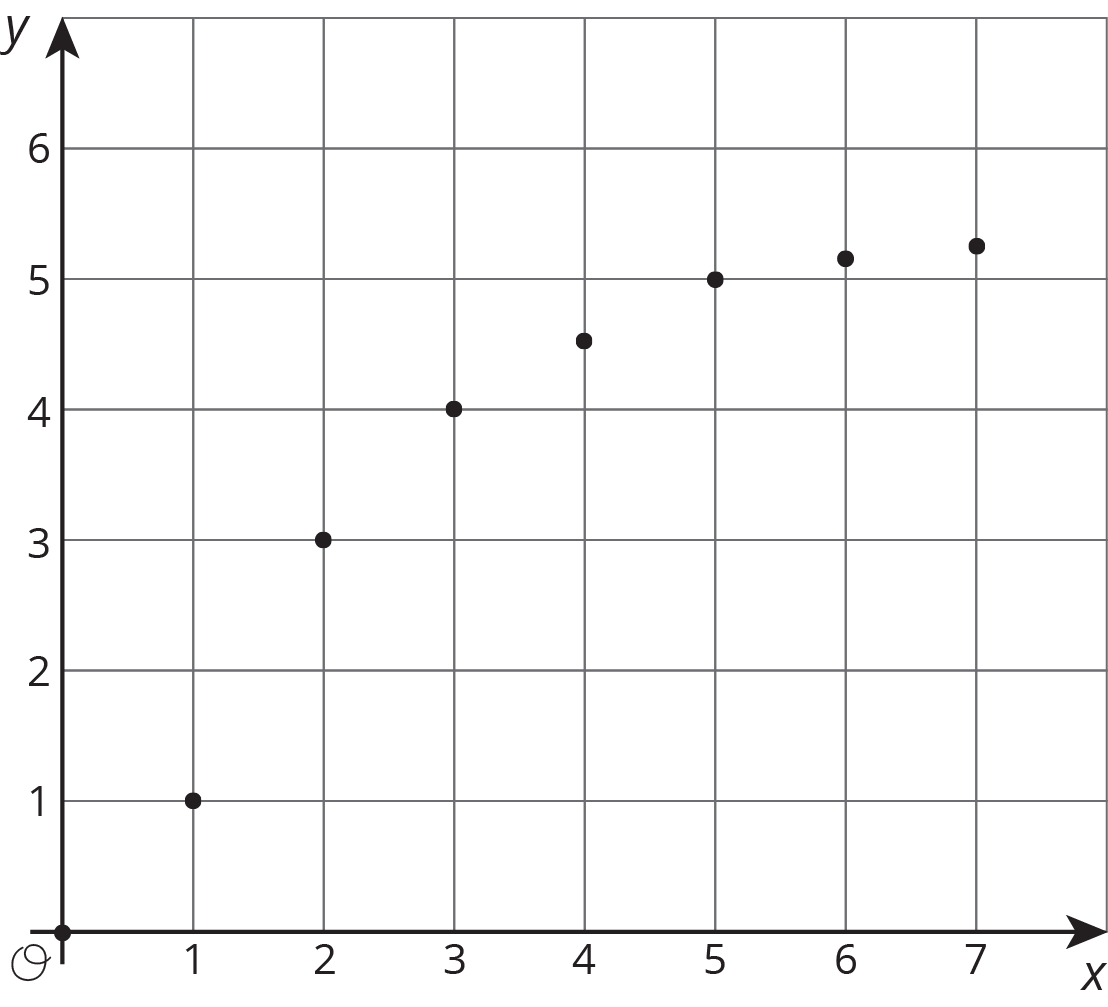
These points do not lie on a line.
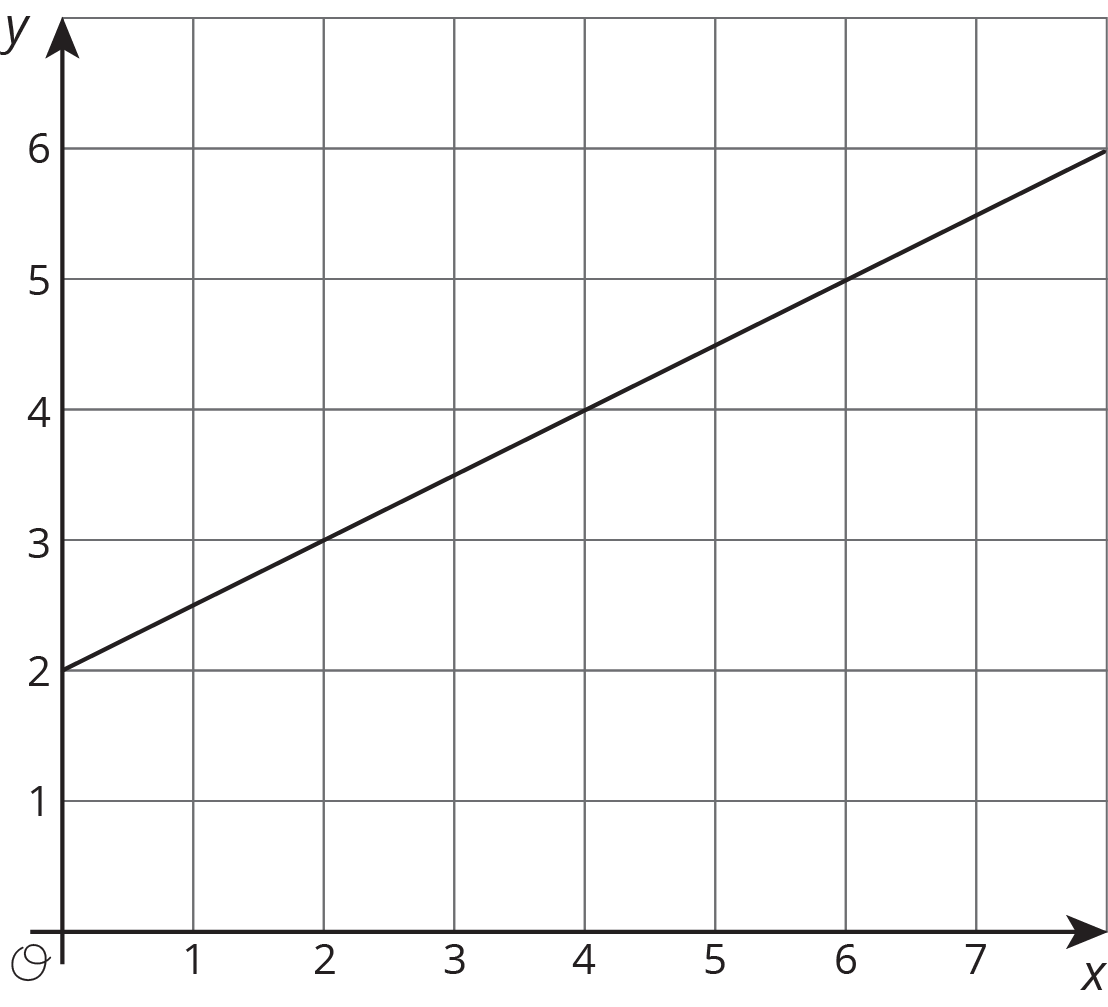
This is a line, but it doesn’t go through the origin.
Here is a different example of a relationship represented by this table where \(y\) is proportional to \(x\). We can see in the table that \(\frac54\) is the constant of proportionality because it’s the \(y\) value when \(x\) is 1.
The equation \(y = \frac54 x\) also represents this relationship.
| \(x\) | \(y\) |
|---|---|
| 4 | 5 |
| 5 | \(\frac{25}{4}\) |
| 8 | 10 |
| 1 | \(\frac{5}{4}\) |
Here is the graph of this relationship.

If \(y\) represents the distance in feet that a snail crawls in \(x\) minutes, then the point \((4, 5)\) tells us that the snail can crawl 5 feet in 4 minutes.
If \(y\) represents the cups of yogurt and \(x\) represents the teaspoons of cinnamon in a recipe for fruit dip, then the point \((4, 5)\) tells us that you can mix 4 teaspoons of cinnamon with 5 cups of yogurt to make this fruit dip.
We can find the constant of proportionality by looking at the graph, because \(\frac54\) is the \(y\)-coordinate of the point on the graph where the \(x\)-coordinate is 1. This could mean the snail is traveling \(\frac54\) feet per minute or that the recipe calls for \(1\frac14\) cups of yogurt for every teaspoon of cinnamon.
In general, when \(y\) is proportional to \(x\), the corresponding constant of proportionality is the \(y\)-value when \(x=1\).
Glossary Entries
- coordinate plane
The coordinate plane is a system for telling where points are. For example. point \(R\) is located at \((3, 2)\) on the coordinate plane, because it is three units to the right and two units up.
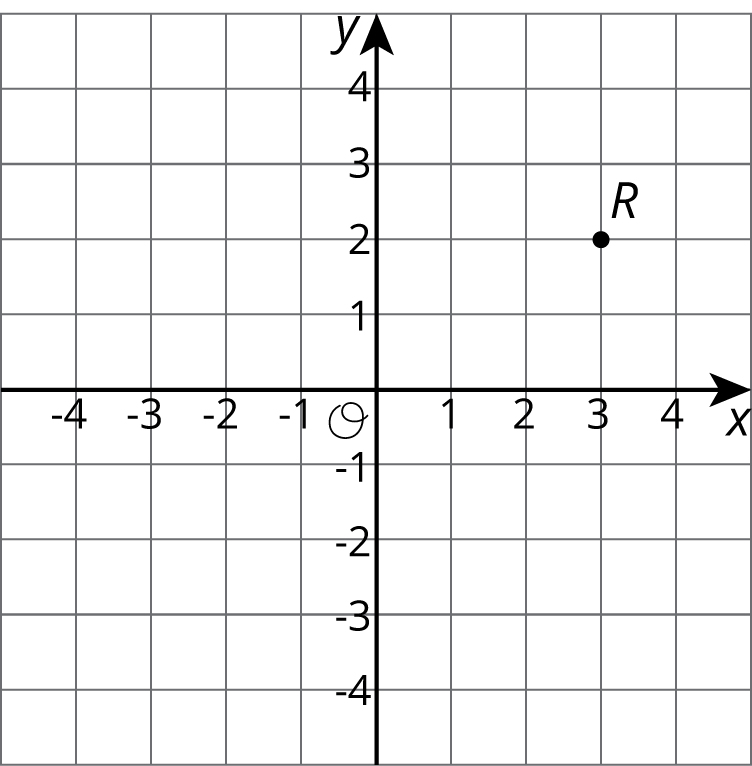
- origin
The origin is the point \((0,0)\) in the coordinate plane. This is where the horizontal axis and the vertical axis cross.
